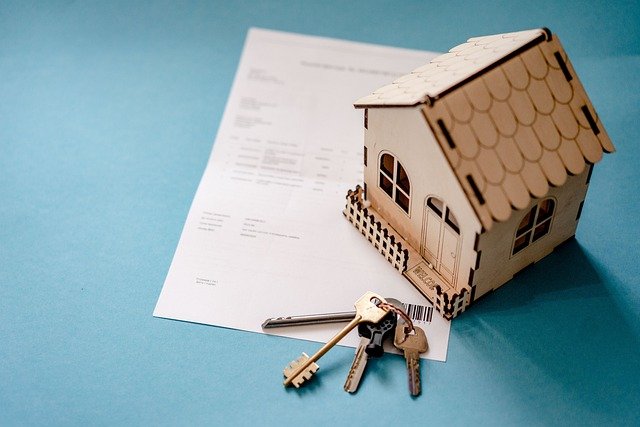Move In Now. Buy Later. No Mortgage Needed.
Rent-to-own homes offer a flexible way to work toward homeownership without the pressure of upfront mortgage approval. Through this option, qualified individuals can move into a home now while gradually building toward a future purchase — all through monthly rental payments that may contribute toward ownership over time. This path is especially helpful for people who have limited savings or imperfect credit history. Terms vary, but many programs provide clear agreements and accessible entry points. Learn how rent-to-own housing could make your move easier, and explore available opportunities in your area.

How does a rent-to-own home agreement work?
A rent-to-own home agreement, also known as a lease-option or lease-purchase agreement, typically involves two key components. First, the tenant pays rent to live in the home, just like a traditional rental. Second, a portion of each monthly payment may be set aside as a credit towards the eventual purchase of the property. The agreement usually specifies a timeframe, often 1-3 years, during which the tenant has the option to buy the home at a predetermined price.
What are the benefits of rent-to-own homes?
Rent-to-own homes offer several advantages for potential homebuyers. This flexible path to homeownership without a mortgage allows individuals to:
-
Move into their desired home immediately
-
Build equity while renting
-
Lock in a purchase price, potentially benefiting from future appreciation
-
Improve credit scores and save for a down payment during the rental period
-
Test out the home and neighborhood before committing to purchase
These benefits make rent-to-own an attractive option for those who aren’t quite ready for a traditional mortgage but want to work towards homeownership.
Are there rent-to-own homes with no credit check?
While some rent-to-own programs advertise “no credit check” options, it’s important to approach these claims with caution. Most reputable rent-to-own agreements will involve some form of financial screening. However, the criteria are often less stringent than those for traditional mortgages. Landlords or property owners may be more willing to consider factors beyond credit scores, such as steady income or a history of on-time rent payments.
How can I find affordable homes to own with monthly payments?
To find affordable rent-to-own homes, consider these strategies:
-
Research local real estate markets for areas with lower home prices
-
Look for properties that have been on the market for an extended period
-
Work with real estate agents who specialize in rent-to-own transactions
-
Check online platforms dedicated to rent-to-own listings
-
Negotiate terms with property owners to ensure monthly payments fit your budget
Remember that affordability extends beyond just the monthly payment – consider factors like maintenance costs and potential property value appreciation as well.
What should I know about rent-to-own agreements in the United States?
In the United States, rent-to-own agreements can vary significantly by state and even by individual contract. Key points to understand include:
-
Option fees: Many agreements require an upfront, non-refundable fee for the option to purchase.
-
Rent premiums: The portion of rent that goes towards the purchase may be higher than market-rate rent.
-
Maintenance responsibilities: Clarify who is responsible for repairs and upkeep during the rental period.
-
Purchase terms: Understand how the final purchase price is determined and what happens if you decide not to buy.
-
Legal protections: Some states have specific laws governing rent-to-own agreements to protect consumers.
Always consult with a real estate attorney or housing counselor before signing a rent-to-own agreement to ensure you fully understand your rights and obligations.
How do rent-to-own homes compare to traditional buying options?
To help you understand how rent-to-own homes stack up against other homeownership paths, let’s compare some key features:
| Feature | Rent-to-Own | Traditional Purchase | Renting |
|---|---|---|---|
| Upfront Costs | Option fee (typically 1-5% of purchase price) | Down payment (often 3-20% of purchase price) | Security deposit (usually 1-2 months’ rent) |
| Monthly Payments | Rent + potential premium for purchase option | Mortgage payment + property taxes + insurance | Rent only |
| Equity Building | Portion of payments may go towards purchase | Builds equity with each mortgage payment | No equity built |
| Flexibility | Can decide to buy or walk away at end of term | Long-term commitment | Short-term commitment |
| Maintenance Responsibility | Varies by agreement | Homeowner responsible | Landlord responsible |
| Credit Requirements | Often more flexible | Strict credit requirements | Varies, but generally less strict |
Prices, rates, or cost estimates mentioned in this article are based on the latest available information but may change over time. Independent research is advised before making financial decisions.
In conclusion, rent-to-own homes offer a flexible path to homeownership without the immediate need for a mortgage. This option can be particularly beneficial for those looking to improve their financial situation while working towards owning a home. However, it’s crucial to carefully review all terms and conditions, as well as consider your long-term financial goals, before entering into a rent-to-own agreement.






